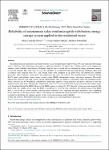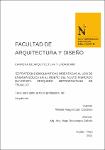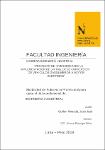Reliability of autonomous solar-wind microgrids with battery energy storage system applied in the residential sector
| dc.contributor.author | Zarate Perez, Eliseo | |
| dc.contributor.author | Santos Mejía, Cesar | |
| dc.contributor.author | Sebastián, Rafael | |
| dc.date.accessioned | 2023-10-25T00:00:28Z | |
| dc.date.available | 2023-10-25T00:00:28Z | |
| dc.date.issued | 2023 | |
| dc.identifier.citation | Zarate, E., Santos, C., & Sebastián, R. (2023). Reliability of autonomous solar-wind microgrids with battery energy storage system applied in the residential sector. Energy Reports, 9, 172–183. https://doi.org/10.1016/j.egyr.2023.05.239 | es_PE |
| dc.identifier.other | . | es_PE |
| dc.identifier.uri | https://hdl.handle.net/11537/34762 | |
| dc.description.abstract | Residential electricity generation can benefit from the successful deployment of photovoltaic (PV) and wind renewable energy sources. However, their intermittent nature poses a significant limitation. To address this, a hybrid system can be employed to enhance system reliability and efficiency. Reliability analysis plays a crucial role in evaluating the energy production capacity to meet the demand. This study aims to assess the reliability of a hybrid PV/wind microgrid through simulation. Data from a residence were collected every 10 s, and average values were computed on an hourly basis and exported for computer processing. Solar irradiation, wind speed, and temperature data were also utilized. The modeling process involved defining the PV panel, wind turbines, battery energy storage system (BESS), management strategy, and energy autonomy. The results indicate that when PV and wind systems operate independently, they are unable to consistently reduce the residential energy deficit. However, the PV/Wind/BESS configuration significantly improves system operation and proves sufficient to meet the required load in most hours. Through this configuration, only 42.5% of the total PV/wind energy utilized by the residents needs to be dispatched through the BESS. Moreover, the BESS capacity is reduced by 50% when the systems are used separately. The public grid only supplies power when the BESS is insufficient to cover the load. Therefore, the optimal sizing of the BESS plays a critical role in system viability, reducing initial installation costs, regulating microgrid parameters, and contributing to the reduction of the energy deficit. Hence, investigating the fundamental design parameters of the microgrid and BESS is essential for identifying the optimal capacity of the system and ensuring model reliability. | es_PE |
| dc.format | application/pdf | es_PE |
| dc.language.iso | eng | es_PE |
| dc.publisher | Elsevier Ltd. | es_PE |
| dc.rights | info:eu-repo/semantics/openAccess | es_PE |
| dc.rights.uri | https://creativecommons.org/licenses/by-nc-sa/4.0/ | * |
| dc.source | Universidad Privada del Norte | es_PE |
| dc.source | Repositorio Institucional - UPN | es_PE |
| dc.subject | Battery storage | es_PE |
| dc.subject | Digital storage | es_PE |
| dc.subject | Electric batteries | es_PE |
| dc.subject | Electric load dispatching | es_PE |
| dc.subject | Housing | es_PE |
| dc.subject | Hybrid systems | es_PE |
| dc.subject | Reliability analysis | es_PE |
| dc.title | Reliability of autonomous solar-wind microgrids with battery energy storage system applied in the residential sector | es_PE |
| dc.type | info:eu-repo/semantics/article | es_PE |
| dc.publisher.country | PE | es_PE |
| dc.identifier.journal | Energy Reports | es_PE |
| dc.description.peer-review | Artículo científico | es_PE |
| dc.subject.ocde | https://purl.org/pe-repo/ocde/ford#2.02.01 | es_PE |
| dc.description.sede | Los Olivos | es_PE |
| dc.identifier.doi | https://doi.org/10.1016/j.egyr.2023.05.239 |







